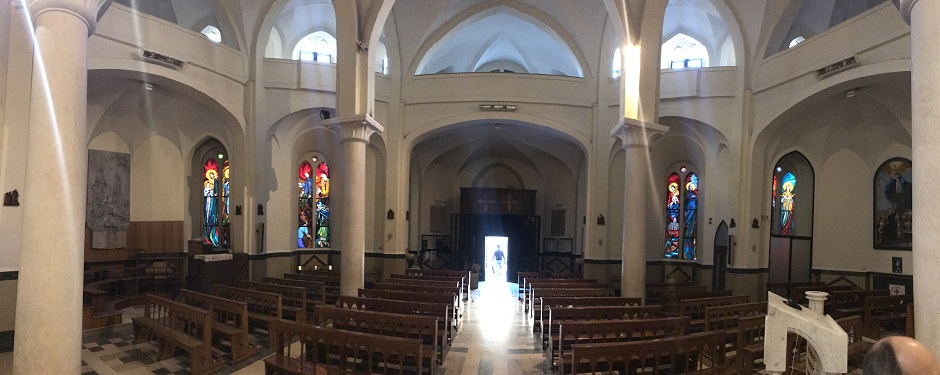The way we heat churches is important for comfort, for minimising the impact on our climate and for conservation. In this article, we look at the advantages and disadvantages of the four most popular methods for church heating.
Many of those running or managing churches are acutely aware of the challenges involved in heating them. Most churches were built hundreds of years ago, where old inefficient heating systems were regularly used and in many churches, these ineffective heating systems are still being used. Therefore most of these churches require a modern energy-efficient heating system. This article aims to find the best method for heating a church, but more accurately to answer the question ‘what is the best new heating method to heat a church?’
Before we dive into exploring the options, it's worth mentioning that tackling inefficient heating has gained extra urgency for those managing the Church of England estate, following the Church's ambitious target of reaching net zero carbon emissions by 2030.
Ambitious Net Zero targets
As part of the
C of E's Routemap to Net Zero Carbon, producing a net zero carbon action plan which includes low-carbon heating options has been set as a key milestone for all cathedrals and the top 20% of energy-consuming churches.
|
Get in touch
We hope that this guide offers useful pointers but should you have specific questions about how best to heat your church building, please get in touch on 0121 580 6200 or use our contact form.

|
1. Underfloor Heating
Underfloor heating is simply a heating system installed underneath the flooring to either heat the floor or more commonly, to act as the main source of heating in the church. The two main forms of underfloor heating are electric systems and water heating systems. The electric underfloor heating systems are usually the most commonly used due to them being easy to install and causing less disruption.
Advantages of underfloor heating for churches:
- Energy efficient heating. Both electric and water underfloor heating systems provide consistent and efficient heating from the floor of the church.
- Reduced heating costs. As underfloor heating uses less energy than previous radiators, they may reduce the costs of energy bills.
- More space available. A major benefit of underfloor heating is it cannot be seen so it does not take up any space in the church, leaving more room for seating areas.
- Easy to run. After it is installed, underfloor heating is virtually maintenance free and is compatible with controllers and thermostats allowing you controllability of the church’s heating system.
- Safety. As the heating system is under the floor, the congregation of the church will be safe with no hot surfaces or sharp edges usually associated with old heating systems.
Disadvantages of underfloor heating for churches:
The Church of England's national estate management resource ChurchCare (link) highlights a number of drawbacks;
- Not appropriate for intermittent use. Underfloor heating is designed to continuously heat buildings. If heating is only required some of the time (e.g. only during services), then it is unlikely that underfloor heating will be worthwhile.
- May not reduce costs. Churchcare advises that underfloor heating may not reduce costs when compared to other similarly-fuelled systems.
- Disruption to the fabric of the building. A new underfloor heating normally requires a new floor and therefore causes irreversible changes to a building.
Additional disadvantages include;
- Installation costs. This is a major disadvantage of underfloor heating systems; the installation costs can rise very quickly especially for churches with large floor areas. Estimated costs for installation is usually between £75 to £100 per square metre of flooring, depending on the type of underfloor heating system that will be installed.
- Installation time. It normally takes a few days to install the underfloor heating system in churches, depending on the amount of flooring that needs to be installed. Electric underfloor heating systems usually requires a self-levelling compound to be applied on top. Water-based underfloor heating will take longer to be installed and would usually be completed within a week.
- Change in floor height. Installing an underfloor heating system usually results in increasing the floor height by a few centimetres, and this can be an issue for some churches.
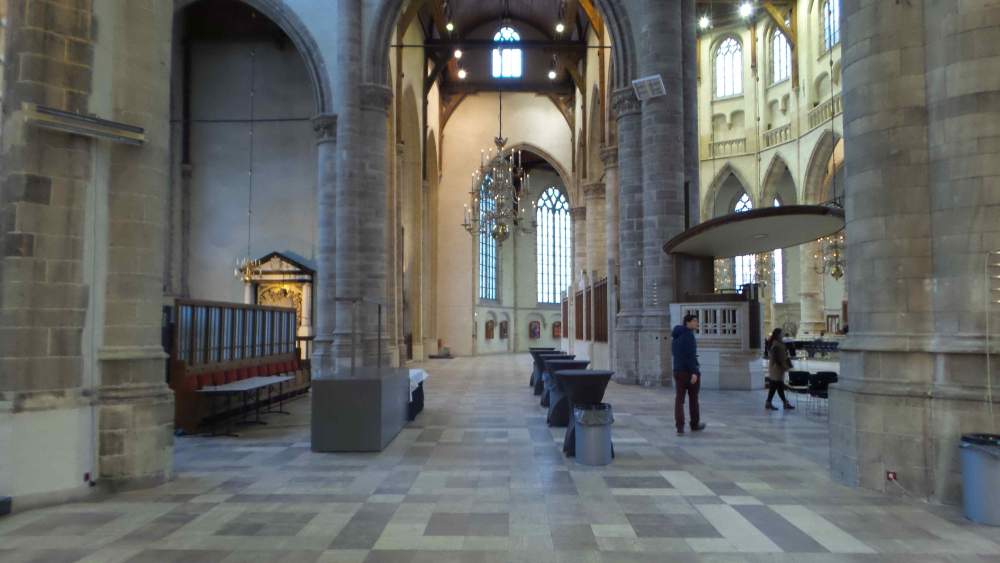
2. Infrared Heaters
Infrared heaters are an innovative energy-efficient heating system that takes advantage of infrared heat, the same form of heat emitted from the sun and from your body. Infrared heat directly travels from the heater to the object requiring the heat, without heating the air in between, and not being affected by the air or wind. Infrared space heaters are ideal for heating churches with large open spaces and high ceilings.
Advantages of infrared heaters for churches:
- Energy efficient. As the infrared heaters uses shortwave infrared heat, the heat directly reaches the people and objects requiring the heat meaning little or no heat is lost to the surroundings, making infrared heaters one of the most energy efficient heating systems on the market.
- Cost-effective. Due to the infrared heaters being highly energy efficient and only being need to be switched on when the heat is required, the heaters greatly reduce the heating costs for churches, particularly during the winter months. To see how cost effective Tansun infrared heaters are, please visit one of our church case study page: ‘Saint Michael’s Church – Wolverhampton’.
- No pre-heating time. As the infrared space heaters use shortwave infrared heat, heat is provided as soon as the heaters are switched on and there is no time required for pre-heating.
- Easy to install. The infrared heaters can be mounted on the walls or ceilings of churches and Tansun offer a range of versatile bracketry compatible with all the heaters, making the heaters very easy to install.
- No maintenance. Once the infrared heaters are installed, they can be left alone as they are maintenance-free. The heaters can be controlled with a range of Tansun controllers, allowing full controllability of the heaters.
- Mounting. Due to their power, the infrared heaters can be mounted high up and placed in an unobtrusive area in the church.
- Safety. The space infrared heaters are usually installed out of the reach of people inside the churches and the heaters contain a protective metal sheath that guards the heating elements.
- No noise. The infrared heaters provide comforting heat in silence, without making any noise, particularly useful in churches when heating a congregation that would prefer to pray in peace and silence.
- Environmentally friendly. Infrared heating is classed as green energy as there are no direct carbon dioxide or nitrous oxide emissions released from the infrared heaters. For more information about why infrared heaters are environmentally friendly, please visit our ‘Green Energy & Energy Savings’ page.
- Large coverage area. Due to the fact that infrared heaters can be mounted high up, they have a very wide coverage area per heater.
Disadvantages of infrared heaters for churches:
- Heat diminishment. After the infrared heaters are switched off, the infrared heat quickly diminishes, unlike convection heating systems where the heat still remains for a while in the church even after the heating system is switched off.
- May not always blend in easily to the environment. While some infrared heaters have a sleek and elegant look, when they are installed in the traditional churches, they do stand out from the infrastructure and architecture of the church, sometimes in an unwelcome fashion. As a UK manufacturer, Tansun can offer bespoke designs where it may be required to help blend in.
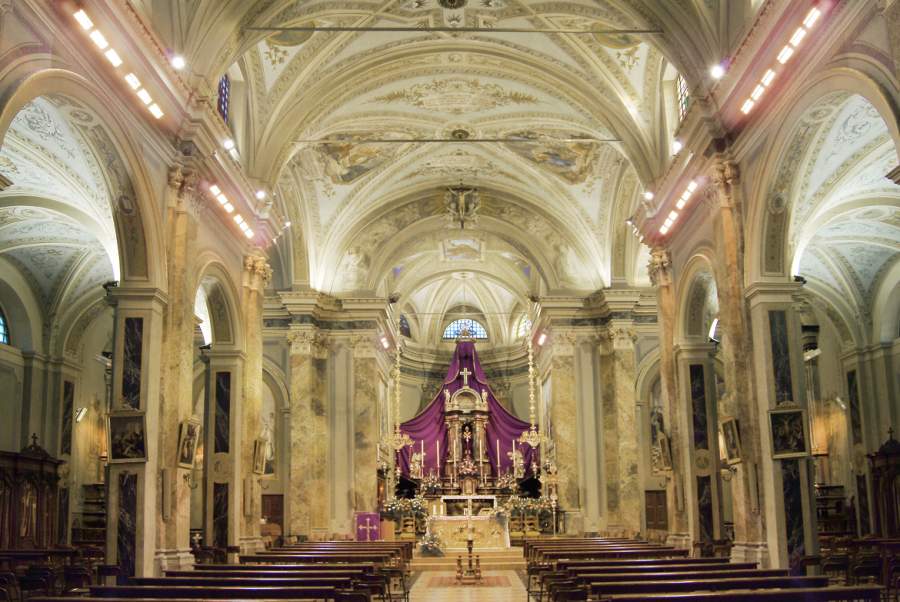
3. Gas Heating
Gas heating is most commonly used as a central heating system, providing comforting warmth to the whole interior of a church. Gas heaters are a type of space heater that burns natural gas, are used to heat a room or the large open space of a church and ensure the indoor area of the church is kept at an ambient temperature.
Advantages of gas heating for churches:
- Efficient. Gas is an efficient fuel, with some modern gas heaters being more than 90% efficient.
- Easy replacement. For churches already with a standard gas boiler, replacing this gas heating system with a new modern version of the gas heater can be fairly straightforward.
- Easy to fix. With gas being one of the most common heating systems in the UK, finding heating engineers if the gas heaters in the church break down or require servicing, is quite easy and fast.
Disadvantages of gas heating for churches:
- Not environmentally friendly. As gas heaters uses fossil fuel, the heaters are not considered environmentally friendly as gas releases carbon dioxide when it is burned.
- Costly installations. Installing a gas heating system in the church can be expensive with installation costs being higher in more rural areas. If your church is not on the gas network, connecting the church to the network will be even more costly.
- Disruptive installations. As expected, installing a gas heating system can take time but also can be quite disruptive to the church, potentially causing disruptions to the daily proceedings of the church.
- Pre-heating required. Some churches only require heating for a few days a week but gas heating systems may need to be turned on a few days before to provide heat for that specific day, which can considerably increase heating costs, particularly during the cold winter months.
- Costly to run. The long pre-heating time of gas heaters considerably increases the weekly heating costs of the church, particularly during the winter months.
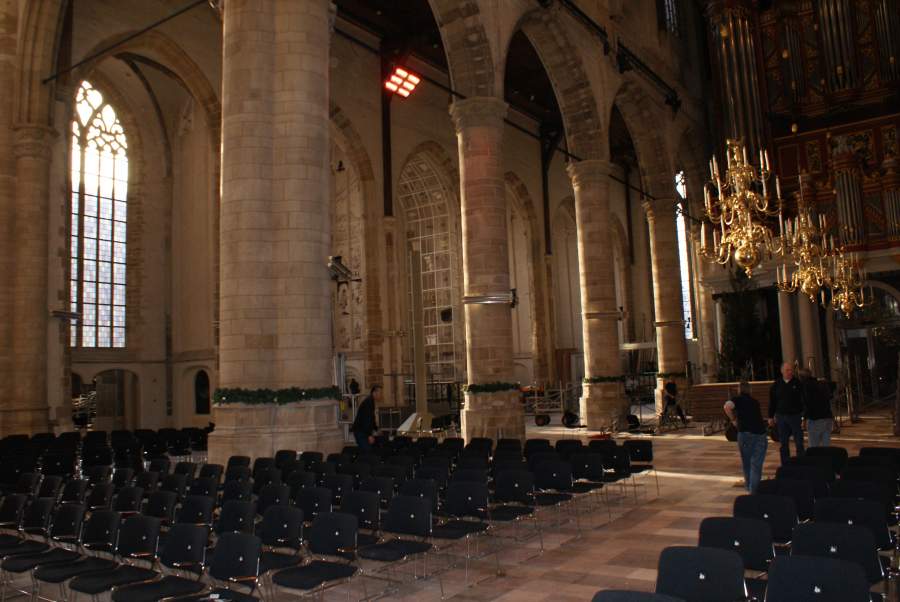
4. Pew Heating
Pew heating is a modern type of electrical heating system designed specifically for
church heating. A pew is a long bench with a back, usually placed in rows inside a church to seat the congregation. With pew heating, the heating element is fixed to the pew’s seating surface and provides local heating directly to the people requiring the heat.
Advantages of pew heating for churches:
- Direct heat. Pew heaters directly heat the churchgoers, not the air so even though the whole interior of the church is not heated, the people requiring the heat are provided with the heat.
- Even heat distribution. The electric heating element is conductive over the whole layer of the pew, resulting in the heat being evenly distributed across the seating surface of the pew.
- Maintenance-free. Pew heating tends to be maintenance-free and does not require refurbishment, with the lifetime of pew heating systems being greater than most alternatives.
- Low pre-heating time. Most pew heating systems only need to be switched on about 10 minutes before the church service.
- No noise. Pew heaters are silent, which is particularly useful in a church.
Disadvantages of pew heating for churches:
- Only seating area heated. Pew heating systems provide local heating, only heating the congregation while they are seated, meaning that when the churchgoers are not seated and instead walking around the church, they will remain cold as the pew heaters only provide heat around the seating area.
- High initial costs. While pew heaters cost considerably less than gas or underfloor heating systems, if the church is quite big with large seating areas, the initial costs to buy the pew heaters can be quite expensive.
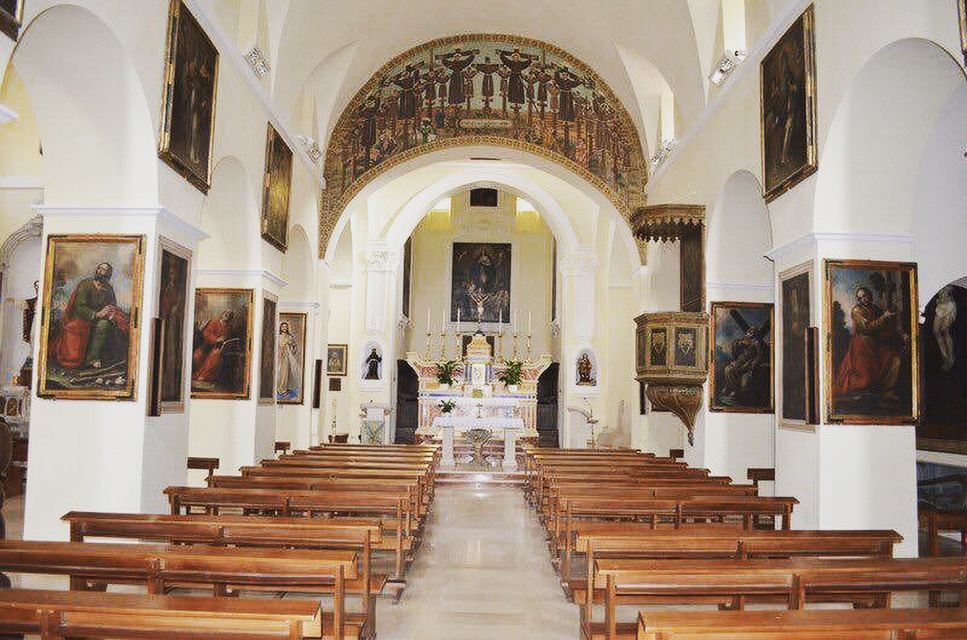
|
Get in touch
We hope that this guide offers useful pointers but should you have specific questions about how best to heat your church building, please get in touch on 0121 580 6200 or use our contact form.

|
Conclusion
While gas and underfloor heating used to be the most common form of heating systems for churches, in this modern age these old heating systems are considered inefficient and costly compared to the present-day heaters. The main issues are gas heaters and underfloor heating aim to heat the whole indoor area of the church, which is usually not required and they have long pre-heating times, resulting in high heating costs for the churches, particularly during the colder winter months.
Electric systems can offer Net Zero emissions at the point of use
Modern innovative heating systems like pew heaters and infrared heaters use electric heating and so are considered environmentally friendly. These heaters are maintenance-free and are switched on only when required, as they directly heat the congregation and the churchgoers requiring the heat, thereby keeping heating costs much lower than the gas and underfloor heating systems.
While pew heaters make no noise and have low pre-heating times, churches with large seating areas will be required to install many pew heaters to make them an effective church heating solution. This is due to their low level of heat output when compared to other forms of heating.
The need to consider multiple factors
Infrared heaters can be mounted on the walls or ceilings of the churches so each infrared heater can heat many more people than each pew heater. Additionally the heat coverage area of an infrared heater is far greater than a pew heater. The effectiveness and the considerable reduction in heating costs that infrared heaters provide makes infrared heaters the optimal method for heating churches.
In our opinion with all factors considered,
infrared heaters would appear to be comfortably the best method for heating churches due to their energy efficiency, no pre-heating times, cost savings, large coverage areas and due to the fact that no maintenance is required once the heaters are mounted.
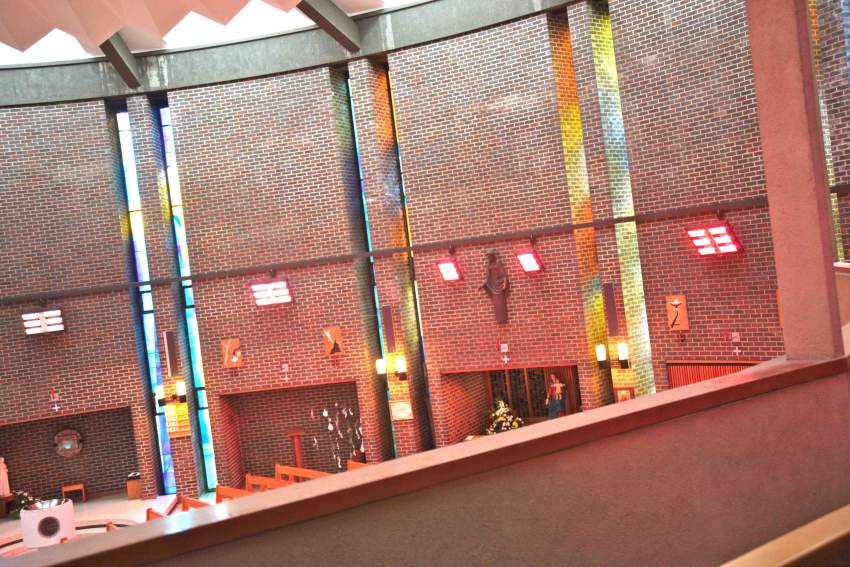
Tansun Infrared Space Heaters for Church Heating
As UK’s leading infrared heater manufacturer for over 30 years, Tansun offers the largest range of industrial, commercial, and domestic infrared heaters in the market.
Tansun infrared heaters are manufactured in the UK to the highest quality and these powerful heaters were designed to be highly energy efficient to minimise heating costs for churches. Tansun has installed infrared heaters across many churches over the years. Please view some of our church case studies showing the cost savings that Tansun infrared heaters provide:
St Michael’s Church – Wolverhampton
St John the Baptist Church – Shropshire
Church of St Mary – Somerset
Our Apollo range is perfect for church heating
In this section, we take a look at our Apollo range, our most popular solution for church heating. Tansun Apollo ‘space heater’ has been the infrared heater of choice for those managing places of worship for over 25 years.
.jpg) The high-quality infrared heaters have been specially designed to heat large, difficult-to-heat buildings that require a high-powered, effective, energy-efficient heating solution.
The high-quality infrared heaters have been specially designed to heat large, difficult-to-heat buildings that require a high-powered, effective, energy-efficient heating solution.
The streamlined Apollo infrared heaters offer high levels of energy efficiency and are available in 1kW to 18kW configurations. Unlike many forms of church heating, Apollo heats people from the moment it is turned on - there's no need for pre-heating.
To maximise energy efficiency, we recommend pairing Apollo with our comprehensive range of
controllers. These include remote controls, time lag switches, and motion sensors. Doing so will help you heat areas only when needed.
|
Get in touch
For more information please visit our
Church Heating page or to speak to one of our sales team, please call us on 0121 580 6200 or visit our Contact page and one of our heating experts will get back to you as soon as they can.

|
